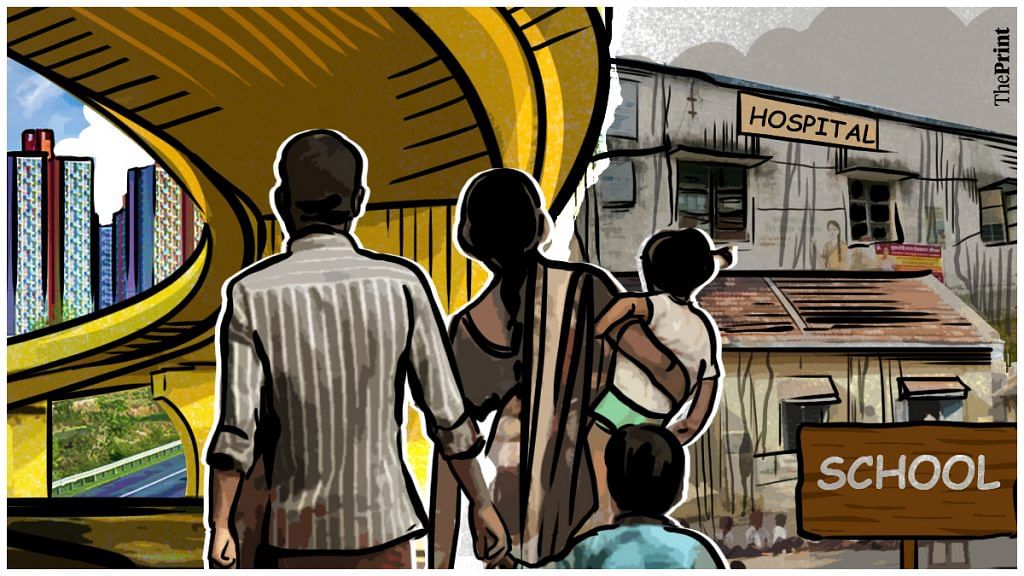A common criticism of government Budgets of recent years is that their focus has been on capital investment, to the relative neglect of the social sectors. The latter is reflected (for instance) in the declining budgetary provisions for the employment guarantee programme, and stagnant provisions for education. This when a fifth of the relevant age cohort still does not complete secondary education, the number of primary and community health centres has remained broadly unchanged over the years, and real rural wages are broadly where they were in the pre-pandemic period.
A response to this criticism can be found in the Economic Survey for 2022-23 which, while faithfully recording all of the above, shows also that the picture is varied, not just black or white. Notably, general government (i.e. Centre and states combined) expenditure on the social sector has been going up, as a share of total government expenditure and as a share of gross domestic product (GDP). Between 2015-16 and 2022-23 (Budget estimates), the share of GDP went up from 6.6 per cent to about 8 per cent (the Survey says 8.3 per cent because it did not have the updated GDP number at current prices). Within that increase, health has been gaining share while education has been stagnant.
The result is improved health metrics and increased coverage of households for tap water supply and electricity. Unfortunately, the data is often slightly out of date; sometimes the numbers are even contradictory. For instance, the sample registration system reports infant mortality in 2020 at 28 per 1,000, whereas the national family health survey (NFHS) for 2019-21 says it was 38.4. Which does one believe? As a trend, departmentally reported “output” claims don’t always match the “outcome” findings of independent surveys. For instance, despite the claims of near-universal coverage for Swachh Bharat, the NFHS says access to improved sanitation has not gone beyond 65 per cent of households. And for all the merits of the Ujjwala scheme in providing cooking gas, clean fuel is available for only 43 per cent of households.
Also Read: With default or harsh economic measures its choices, Pakistan stuck between rock & a hard place
There is the issue of reference points. One way to check progress is to compare with the past. Another is to use international benchmarks. This can be occasionally problematic, as Sanjeev Sanyal, principal economic advisor to the Government of India, has persuasively argued in the Economic Times with regard to the World Health Organization’s calculations on stunting and wasting among children, and the International Labour Organization’s definitions for labour force participation among women. India’s figure is unusually high in the first case, and unusually low in the second case.
Nevertheless, it is noteworthy that India’s ranking on the UN’s human development index (HDI) has remained more or less what it was over the years — suggesting that the country is doing no better and no worse than other countries, though most of them have been growing much slower than India. What is more, India’s own rate of progress on HDI has slowed down in the second decade of the century, compared to the previous two decades. The country continues to be ranked in the “medium” category for human development. Crossing the threshold into the “high” category (which Vietnam has already done) will take the rest of the decade, at the present rate of progress. It would seem that, while many government programmes have notched up notable successes, there is no step jump in overall performance.
Mention must be made of the construction of a variety of data platforms, listed in the Survey, on which to base sundry government programmes. Apart from Aadhaar (used for direct payment into bank accounts for over 1,000 central and state schemes) and the Unified Payments Interface (also eminently successful), there are platforms for registering workers in the informal sector, for small businesses, digital commerce, and the like. Some of this data (such as a doubling of the number of registrations for paying the goods and services tax) has been used to record trends in business size and growth, to cite one example. But one needs more evidence of such outcomes, and public access to the meta data for broader analysis. How, for instance, do 285 million informal sector workers benefit from registering on the e-shram platform?
By special arrangement with Business Standard
Also read: What degree of dominance do India’s biggest businesses enjoy? Decoding the Billionaire Raj
